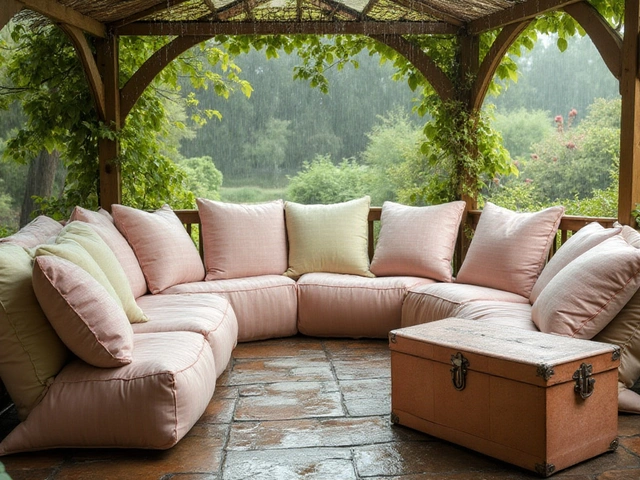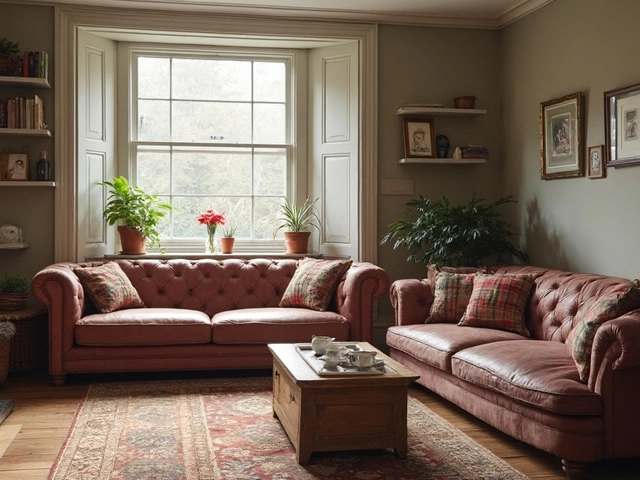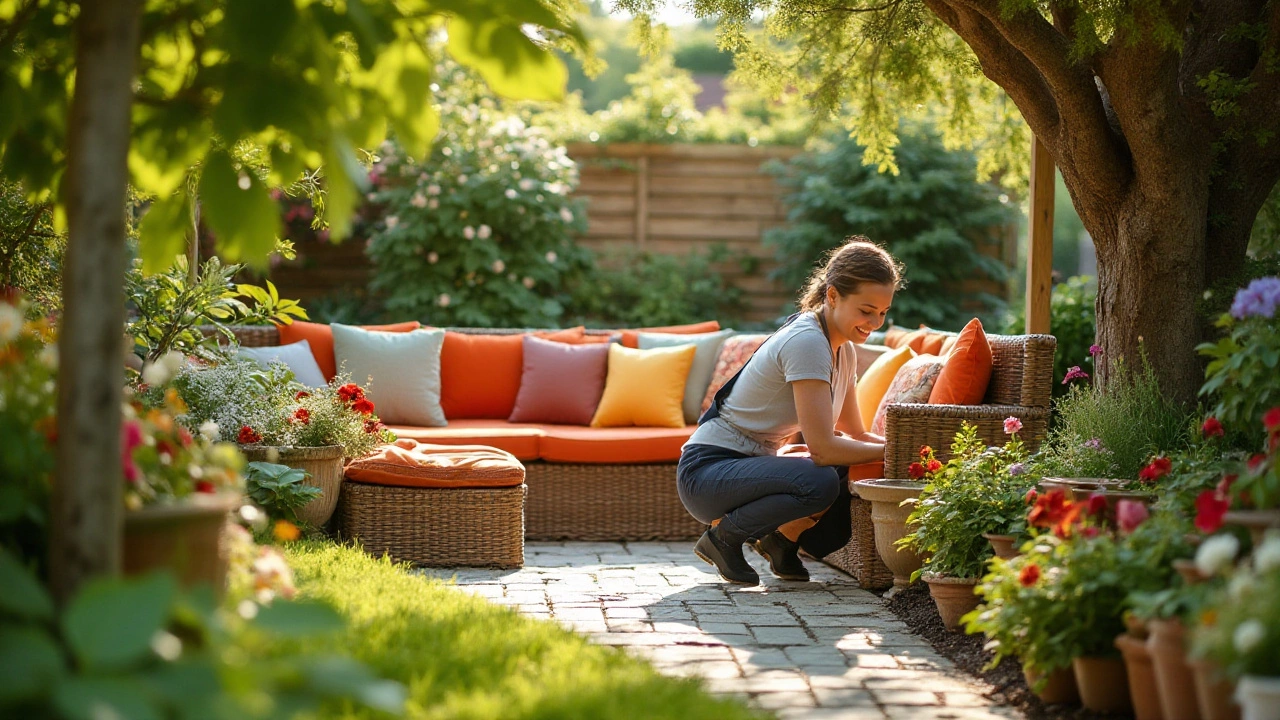 31
Dec,2024
31
Dec,2024
Garden cushions can completely transform your outdoor space into a cozy relaxation haven. However, their charm often gets overshadowed by the constant battle with mold, especially when they're left to brave the elements. Mold thrives in damp, humid conditions, making your cushions an easy target.
Even the most diligent garden enthusiasts have faced the frustration of finding mold patches on their favorite furniture. But don't worry; by understanding how mold forms and taking some precautionary steps, you can keep your cushions fresh and inviting.
In this guide, we'll explore essential practices to prevent mold growth, from choosing the right materials to effective cleaning and storing techniques. Equip yourself with these tips, and let your outdoor oasis remain a pristine, welcoming spot year-round.
- Understanding Mold Causes
- Selecting Mold-Resistant Materials
- Regular Maintenance and Cleaning
- Proper Storage Solutions
Understanding Mold Causes
Mold on garden cushions is a problem many outdoor enthusiasts know all too well. But to tackle this common nuisance effectively, understanding what causes mold in the first place is crucial. Mold is a type of fungus that thrives in moist environments. It requires four main ingredients to flourish: moisture, food, warmth, and oxygen. Among these, moisture is the most significant factor. Outdoor furniture is vulnerable because rain, humidity, and even dew can provide the moisture mold needs.
Garden cushions are typically made from porous materials that can easily soak up water. When left damp, these materials create a perfect breeding ground for mold. Organic debris like leaves or pollen settles on cushions, offering plenty of “food.” Temperatures between 60 and 80 degrees Fahrenheit are ideal for mold growth, which aligns perfectly with the climate cushions often face. It's worth noting that once mold spores latch on, they can multiply rapidly if conditions remain favorable. Regular exposure to moisture and warmth without proper care escalates the growth, making it harder to control.
Weather Conditions and Mold Growth
Many might believe that mold is a sign of neglect, but even the most well-kept gardens can fall victim due to weather conditions. High humidity levels, common in summer, are particularly notorious for encouraging mold. Cushions left out in such conditions can soak up the moisture from humid air, a fact not many consider. Even if there's no rain, the mere presence of humidity can start the mold growing process. During rainy seasons, the constant wet-dry cycle further accelerates this. As weather patterns shift, understanding this dynamic becomes crucial.According to a study by the Environmental Protection Agency (EPA), mold can begin to grow in 24 to 48 hours even on seemingly dry surfaces if the right conditions exist.
The EPA highlights that "indoor and outdoor mold thrives when there's excessive moisture."This raises awareness about not just visible water, like rain, but invisible humidity. Therefore, combating mold means controlling not only the visible environment but also the invisible air around it. Recognizing these factors helps us reinforce better practices to combat mold before it even starts.
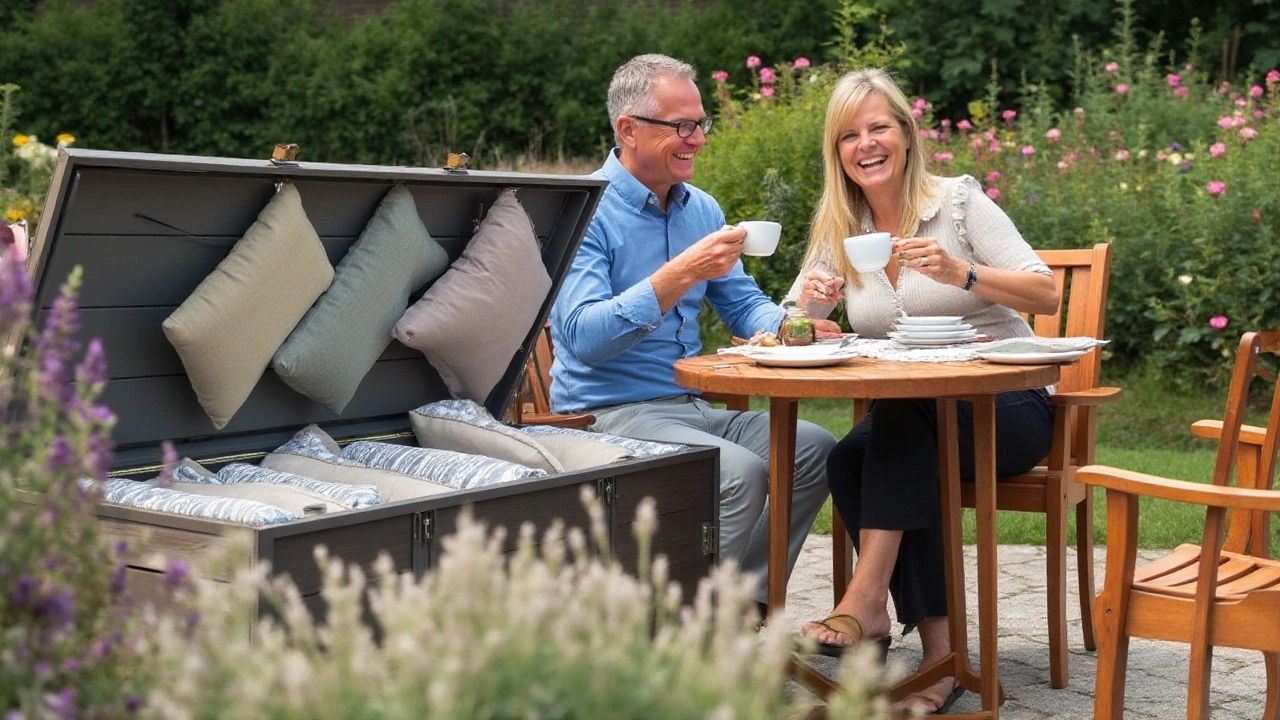
Selecting Mold-Resistant Materials
When you're searching for outdoor garden cushions, the material choice plays a pivotal role in preventing mold. Not all fabrics are created equal, especially when tasked with enduring the elements. Materials like cotton or wool, though comfortable, can often act as sponges, soaking up moisture and providing the perfect breeding ground for mold and mildew. Instead, consider synthetic options such as acrylic or polyester, which are designed to wick away water and resist mold growth.
Acrylic fabric, commonly used by well-known brands such as Sunbrella, is prized for its ability to withstand harsh weather conditions while resisting water absorption. Its tightly woven fibers make it difficult for mold spores to penetrate and settle. Similarly, polyester, and its derivative olefin, are great choices due to their hydrophobic properties. These materials not only repel water but are also resistant to sunlight which prevents fading. The resilience of olefin against UV rays further extends the life of your outdoor furniture, maintaining its appearance through multiple seasons.
Consider the cushion filling as well. Quick-dry foam is an excellent option, as it's engineered with large open cells to allow air and water to flow through, significantly reducing drying time. This ensures that any trapped moisture quickly evaporates, making it harder for mold to find a foothold. Some manufacturers now offer antimicrobial treatments in their fabrics, adding another layer of defense against unwanted microbial growth.
According to a study by the American Society for Microbiology, "antimicrobial-treated textiles can significantly reduce the presence of harmful microorganisms, including mold."
The Impact of Fabric Choices
Selecting the right fabric does more than just prevent mold; it also contributes to the overall ambiance and comfort of your outdoor settings. Breathable fabrics allow for better air circulation, creating a more comfortable seating area. Furthermore, consider investing in fabrics that are not only durable but also easy to clean. Many modern patio cushions are designed with removable covers that can be machine washed, making maintenance effortless.
For eco-conscious consumers, recycled materials or sustainably produced options are increasingly available. These fabrics not only provide mold resistance but also minimize environmental impact. Look for certifications that assure environmentally-friendly production practices. It’s a thoughtful way to enjoy your outdoor spaces while contributing positively to the planet. By making educated choices in your selection of mold-resistant materials, you can significantly extend the life and beauty of your garden cushions, ensuring your patio remains a haven of comfort and style.
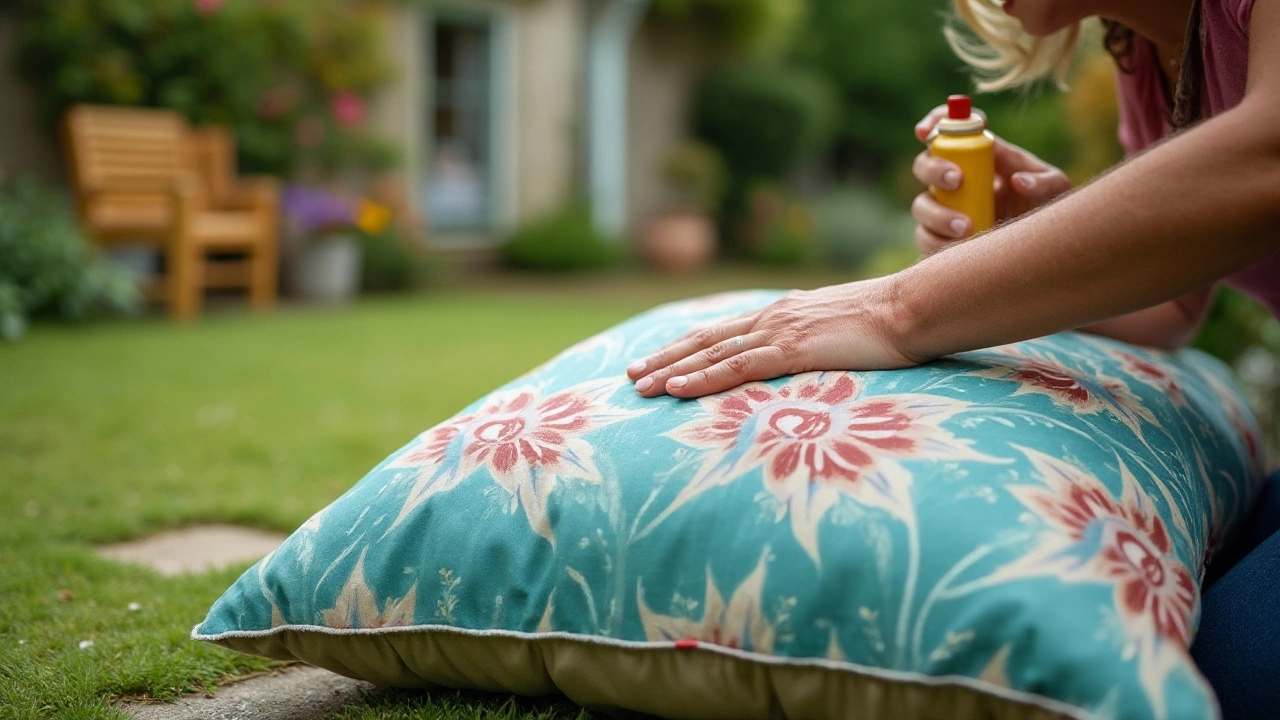
Regular Maintenance and Cleaning
Regular maintenance and cleaning are essential steps to preserve the quality and appeal of your outdoor garden cushions. Cleaning should be approached with consistency as neglecting it leads to unpleasant mold buildup that not only damages the fabric but also your enjoyment of the outdoor space. Begin by making this task a routine habit, checking your cushions at least once every two weeks for any signs of dirt, debris, or mold.
First of all, a soft-bristle brush is your best friend in removing surface debris from your garden cushions. Gentle brushing prevents your cushions from accumulating layers of grime which invites moisture and mold. After brushing, inspect the cushions for small spots that might herald the start of mildew. It's critical to catch them early, as unchecked mold quickly spreads. If any growth is detected, a mild cleaning solution made of dish soap and warm water should do the trick. Scrub gently using a soft cloth to avoid damaging the fabric.
The cleaning doesn't stop with scrubbing; thorough rinsing is equally crucial. Use a hose with gentle pressure especially where mold has been detected. This action rids the cushions of soap residue which may also encourage mold if left unchecked. Post rinsing, the drying process is significant. A common mistake is leaving the cushions in a heap, allowing mold to thrive in moisture. Spread them out flat on a clean surface under direct sunlight. Sunshine acts as a natural fungicide, further protecting your outdoor furniture from mold.
Deeper Cleaning Techniques
For stubborn mold stains, going beyond the basic cleaning methods can be necessary. Commercial cleaners designed specifically for upholstery are valuable, yet homemade mixtures can be just as effective. A mixture of one-part vinegar to two-parts water is potent for deep cleaning.
"Vinegar does wonders in tackling mold, helping you maintain a fresh-smelling space," mentions gardening expert Jeffrey Wilson, highlighting vinegar's dual action of cleanliness and deodorization.This mixture can be sprayed onto the cushions and left to sit for a few minutes before rinsing. Combining it with a thorough rinse ensures no cleaner is left behind to foster future growth.
Don't overlook the potential of investing in waterproof covers as a preventative strategy for maintenance. By keeping a barrier between moisture and your cushions, you're significantly reducing the risk of mold. Most retailers offer an assortment of these protective covers that blend function with style, adding an extra layer of design to your garden.
This regular maintenance routine may seem time-consuming, but it pays dividends in the long run. Not only does it keep your garden looking immaculate, but it also ensures a healthier environment for relaxation. Implement these steps into your routine, and mold will have to look elsewhere for a new home.
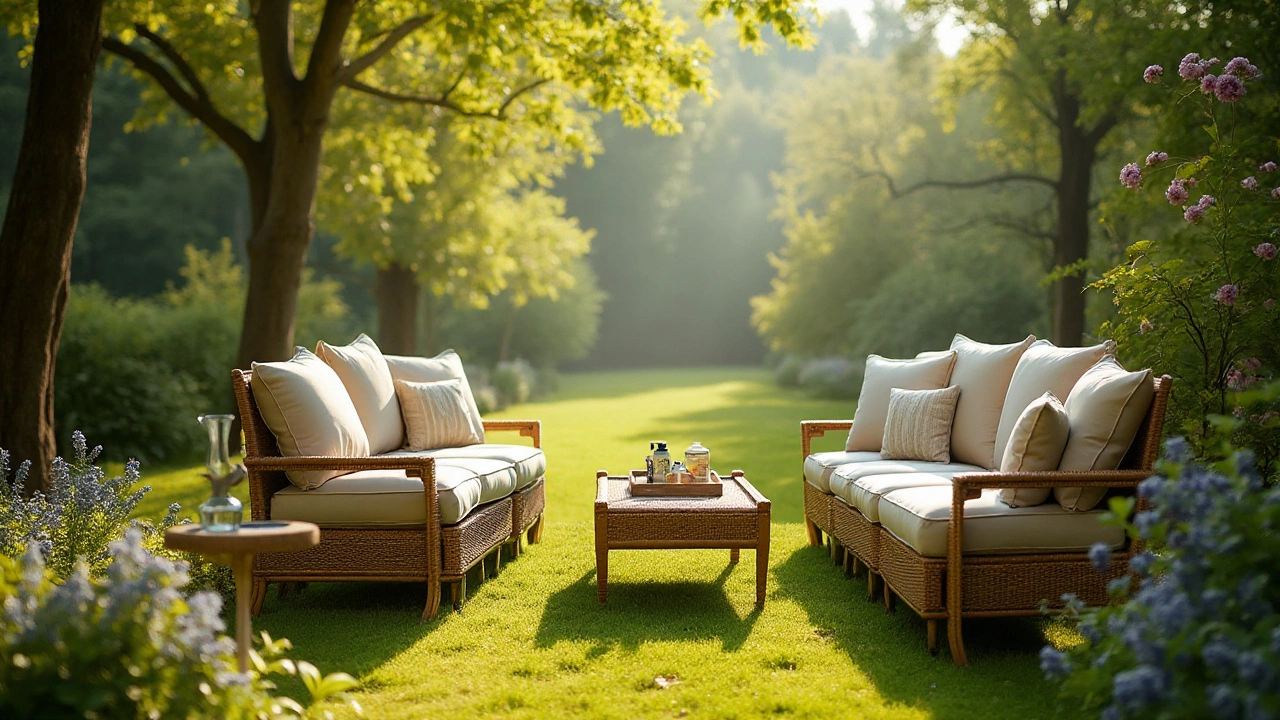
Proper Storage Solutions
Taking care of garden cushions goes hand in hand with knowing how to store them properly. The battle against mold is often won in the off-season, when cushions aren’t in use. Simply tossing them aside or leaving them exposed is an invitation to unwanted mold growth. The first step in proper storage is ensuring cushions are completely dry before you put them away. Even a hint of moisture can spark mold spores to life, leading to the dreaded musty smell.
The storage location matters significantly. Choose a place that remains dry and well-ventilated throughout the year. A garage, shed, or even a designated area indoors are often good picks. If those options are unavailable, you could invest in waterproof cushion storage bags or containers. These provide an extra layer of protection against dampness. When stacking cushions in storage, don’t stack them too tightly. Proper airflow is essential to avoid any pressure points that might trap moisture.
Using dedicated storage solutions like patio storage boxes can be a game-changer. These boxes are designed to withstand outdoor conditions and are often the easiest place to store your cushions straight off your lounge chair. They come in various materials—plastic, wooden, or even metal—with each offering its own aesthetic and protective advantages. A cube-style storage bench can double as extra seating while keeping cushions safely tucked away. According to a recent survey, homeowners reported a 45% increase in cushion lifespan when using proper storage solutions.
“Preserving the lifespan of your garden cushions starts with storage; a dry place is not a luxury but a necessity.” — Home & Garden Journal
It’s crucial to clean your cushions thoroughly before they go into storage. Any dirt left behind can become a feeding ground for bacteria, accelerating mold growth. Regular maintenance at the end of each season can spare you significant headaches come spring. A mild soap and water wash should do the trick; just make sure it’s fully rinsed and dry. And finally, don’t forget to take a peek at your stored items every few months. This occasional check can help you catch and address any issues before they become significant problems.


